Related Research Articles
Spin-off, Spin Off, Spin-Off, or Spinoff may refer to:
A startup or start-up is a company or project undertaken by an entrepreneur to seek, develop, and validate a scalable business model. While entrepreneurship includes all new businesses including self-employment and businesses that do not intend to go public, startups are new businesses that intend to grow large beyond the solo-founder. During the beginning, startups face high uncertainty and have high rates of failure, but a minority of them do go on to become successful and influential, such as unicorns.
Technology transfer (TT), also called transfer of technology (TOT), is the process of transferring (disseminating) technology from the person or organization that owns or holds it to another person or organization, in an attempt to transform inventions and scientific outcomes into new products and services that benefit society. Technology transfer is closely related to knowledge transfer.
The MIT Entrepreneurship Center is one of the largest research and teaching centers at the MIT Sloan School of Management, the business and management school at the Massachusetts Institute of Technology. It was founded in the early 1990s and charged with the mission to develop MIT's entrepreneurial activities and interests in education and research, alliances, and the community.

Alex Paul "Sandy" Pentland is an American computer scientist, HAI Fellow at Stanford, Toshiba Professor at MIT, and serial entrepreneur.

Dylan Jones-Evans was born in Bangor, Gwynedd and brought up in Pwllheli on the Llyn Peninsula. He is currently Assistant Pro-Vice-Chancellor (Enterprise) and the chair in entrepreneurship at the University of South Wales. He is visiting professor of entrepreneurship at the University of Turku in Finland, newspaper columnist and the creator of the Wales Fast Growth 50, an annual barometer of entrepreneurial firms in Wales.
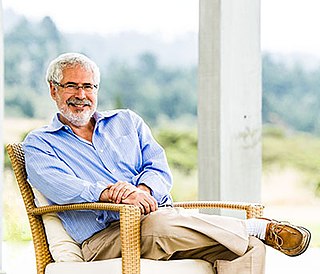
Steve Blank is an American entrepreneur, educator, author and speaker. He created the customer development method that launched the lean startup movement. His work has influenced modern entrepreneurship through the creation of tools and processes for new ventures which differ from those used in large companies.

Entrepreneurship is the creation or extraction of economic value in ways that generally entail beyond the minimal amount of risk, and potentially involving values besides simply economic ones.
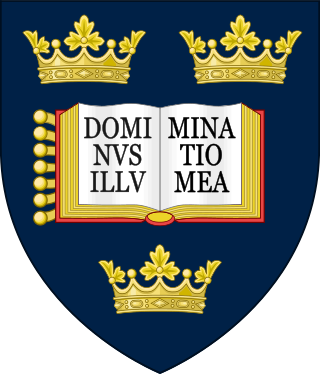
Oxford University Innovation Limited (OUI) is a British technology transfer and consultancy company created to manage the research and development (R&D) of university spin-offs. OUI is a wholly owned subsidiary of the University of Oxford, and is located on Botley Road, Oxford, England. OUI was previously known as Isis Innovation (1988–2016) and Oxford University Research and Development Ltd (1987–1988).

The ARCH College of Design and Business is a design College in Jaipur (Rajasthan), India. It was set up in 2000 under the management of the Arch Educational Society.
An entrepreneurial ecosystem or entrepreneurship ecosystems are peculiar systems of interdependent actors and relations directly or indirectly supporting the creation and growth of new ventures.
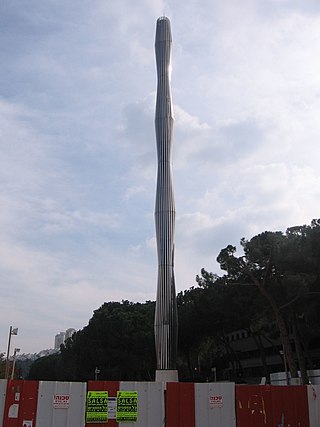
T3 Technion Technology Transfer is the technology transfer unit of the Technion – Israel Institute of Technology in Israel. The unit operates under the auspices of the Technion Research & Development Foundation.

National Institute of Food Technology, Entrepreneurship and Management, Thanjavur (NIFTEM-T), formerly Indian Institute of Food Processing Technology (IIFPT), is an academic institution with Institute of National Importance (INI) status, functioning under the Ministry of Food Processing Industries (MoFPI), Government of India located at Thanjavur, Tamil Nadu. The institute offers academic and research programmes in the field of food processing technology. The institute has National Accreditation Board for Testing and Calibration Laboratories (NABL) accredited food quality testing laboratory which is also notified Food Safety and Standards Authority of India (FSSAI) Referral Food Laboratory. Food product development laboratory, food microbiology laboratory, post harvest pest management laboratory, food processing incubation center, Central Instrumentation Laboratory and food engineering laboratories are in its main campus at Thanjavur. NIFTEM-T is operating liaison offices at Guwahati, Assam and Bathinda, Punjab. These liaison offices have facilities to give skill development trainings, incubation and consultancy services to the farmers, entrepreneurs and students in the field of value addition of agricultural produce and food processing technologies.

Shaker A. Zahra is the Robert E. Buuck Chair of Entrepreneurship and professor of strategy and entrepreneurship, Carlson School of Management, University of Minnesota. He is also the academic director of the Gary S. Holmes Entrepreneurship Center.
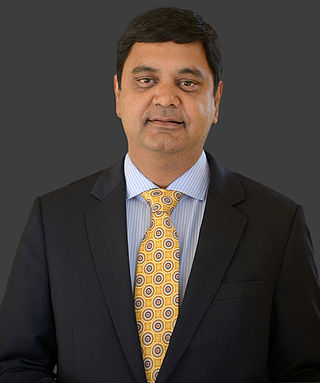
Gunjan Sinha is an Indian-American entrepreneur and business executive. He is the Co-Founder & Executive Chairman of MetricStream. He is also best known as the founder of WhoWhere?, an internet search engine he sold to Lycos in 1998. He is also the co-founder of customer engagement software provider eGain Corporation. He has served on the board of numerous Silicon Valley startups including Regalix, OpenGrowth, DesignEverest.
Karl Hampton Vesper is an American scholar and professor emeritus of management, mechanical engineering and marine studies at the University of Washington (WA). Vesper is known as a pioneer in the field of entrepreneurship research and education. He has launched several entrepreneurship courses and programs, and he has been involved in organizing some of the first conferences on entrepreneurship in the US.
University technology transfer offices (TTOs), or technology licensing offices (TLOs), are responsible for technology transfer and other aspects of the commercialization of research that takes place in a university. TTOs engage in a variety of commercial activities that are meant to facilitate the process of bringing research developments to market, often acting as a channel between academia and industry. Most major research universities have established TTOs in the past decades in an effort to increase the impact of university research and provide opportunities for financial gain. While TTOs are commonplace, many studies have questioned their financial benefit to the university.
IpOp model is a strategic management approach for pre-project analysis suitable for innovation management and corporate entrepreneurship. Besides guiding innovators on how to analyze an opportunity, it explains how to draft an opportunity case or a business plan to let decision-makers, such as investors, or management, assess the merits of the opportunity.
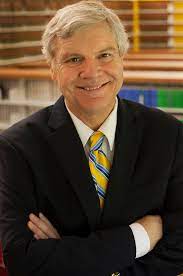
Anthony J. “Tony” Luppino is an American attorney, legal scholar, and author. A law professor at the University of Missouri - Kansas City School of Law since 1991, he is the Rubey M. Hulen Professor of Law and Urban Affairs, Director of Entrepreneurship Programs, and Senior Fellow with the UMKC Regnier Institute for Entrepreneurship & Innovation. He is particularly active in the areas of entrepreneurship and business law, and cross-disciplinary studies and programs connecting them.
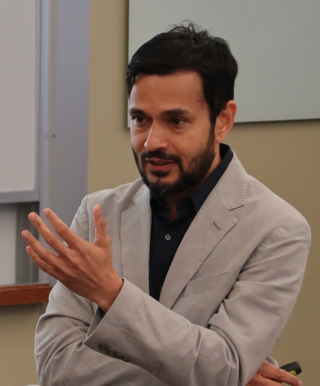
Deepak Hegde is an Indian born American business scholar. He is the Seymour Milstein Professor of Strategy at the New York University, Stern School of Business.
References
- ↑ "University spin-outs: the secrets of their success". the Guardian. 2014-12-09. Retrieved 2020-06-07.
- ↑ Michaels, Daniel (2019-10-09). "Europe's Old Universities Spin Out New Tech Companies". Wall Street Journal. ISSN 0099-9660 . Retrieved 2020-06-07.
- ↑ Shane (2004).
- ↑ See for example: Vohora et al. (2004).
- ↑ Di Gregorio & Shane (2003); Klofsten & Jones-Evans (2000); Kondo (2004).
- ↑ Clarysse et al. (2005); Van Burg et al. (2008); Wright et al. (2007).
- ↑ Bird et al. (1993); Shane (2004); Slaughter & Rhoades (2004).
- ↑ Van Burg et al. (2008).